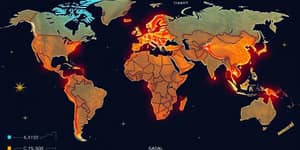
Latin America stands at a crossroads in 2025, presenting a unique blend of promise and peril. After the pandemic’s shockwaves, economies are striving to regain momentum, yet face daunting headwinds.
With diverse trajectories across countries, the region’s outlook combines bright spots and sobering challenges. Stakeholders must navigate an intricate landscape to harness opportunities while mitigating threats.
Analysts project the region’s GDP growth at the slowest-growing region worldwide, with just 2–2.1% in 2025. A modest rebound to 2.4–2.5% is forecast for 2026, underscoring the need for sustained momentum.
Inflation remains a pressing concern, especially in Bolivia, Brazil and Haiti, where price stability has yet to be fully restored. Meanwhile, structural weaknesses dampen the region’s long-term growth potential.
These figures reveal a region of contrasts: pockets of vibrancy alongside broad challenges in productivity and investment.
Persistent inflation and unemployment top the list of obstacles. Real wages are eroded by rising prices, fueling inequality and weakening domestic demand. Public debt has climbed from 59.4% of GDP in 2019 to an estimated 63.3% in 2024.
Furthermore, concerns around persistent concerns about corruption and bureaucratic inertia undermine investor confidence. Despite medium- and long-term optimism in Argentina, Chile and Colombia, near-term sentiment remains fragile.
Politically, gridlock and polarization hinder the implementation of crucial reforms. Public dissatisfaction is rising as governance falters, risking social unrest. Criminal networks exploit economic gaps, drawing disaffected youth into illicit activities.
Social tensions are exacerbated by unequal access to education and healthcare, perpetuating cycles of poverty. In many urban centers, protests over living costs and services signal a growing demand for accountability.
Building trust in democratic institutions will be vital to maintaining stability. Efforts to restore confidence in governance must address both transparency and social equity.
Latin America’s fortunes are closely tied to global powers. China’s outward FDI into the region reached $8.5 billion in 2024, part of over $120 billion in loans since 2005. More than 20 countries have joined the Belt and Road Initiative, deepening economic ties.
Meanwhile, U.S. trade tariffs and protectionist measures bite into export performance, particularly for economies integrated with North America. Slowing growth in China and reduced development aid add further complexity.
Interest in nearshoring offers potential, but policy uncertainty and infrastructure gaps limit its realization. A balanced strategy to diversify markets and strengthen supply chains is critical.
Experts emphasize the pressing need for structural reforms to ignite productivity and inclusion. Priorities span infrastructure, education and regulatory clarity.
These steps can lay the groundwork for sustainable growth and social cohesion. By addressing core weaknesses, countries can unlock the region’s latent potential.
Latin America’s 2025 outlook is a story of high economic potential—and even higher risks. The path forward demands vision, collaboration and bold action.
Stakeholders—from governments and businesses to civil society—must rally around shared objectives. With strategic reforms and steadfast resolve, the region can transform uncertainty into opportunity, forging a future of resilience and prosperity.
References













